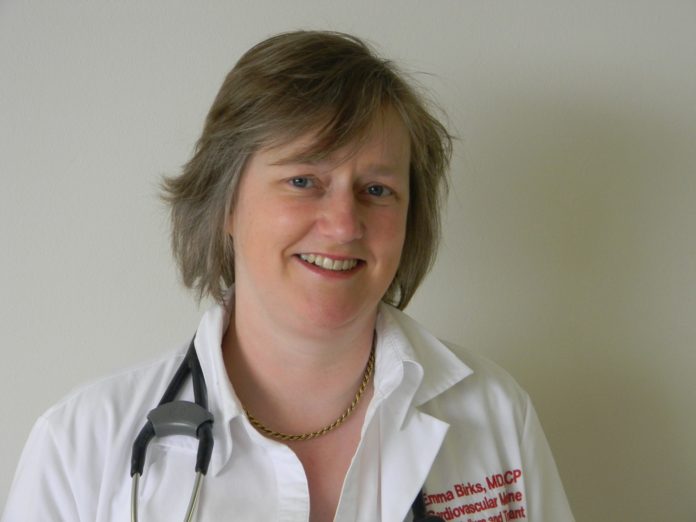
For patients with severe heart failure, a heart transplant or permanent artificial heart assist device have been considered the only permanent therapy as severe heart failure was not known to be reversible. However, a new study, led by Emma J. Birks, MBBS, PhD, professor at the University of Louisville School of Medicine, is showing that an artificial heart assist device along with medications, may actually help heal the heart, avoiding the need for a heart transplant and allowing for the removal of the device.
Birks presented preliminary results of the study at the American Heart Association’s Scientific Sessions this weekend in New Orleans, showing more than 40 percent of advanced heart failure patients treated with a combination of an artificial heart assist device, called a left ventricular assist device (LVAD), and intensive drug therapy have recovered their heart function enough to allow removal of the LVAD device.
The multicenter trial called RESTAGE, includes 40 patients at six different centers (including Jewish Hospital, a part of KentuckyOne Health) with very advanced or end stage heart failure implanted with an LVAD (HeartMate II) pump, 36 of whom were considered evaluable, and prescribed an aggressive combination of drugs (Lisinopril 40 mg, spironolactone 25 mg, digoxin 125 mic, losartan 150 mg daily and coreg 25 mg bid). All of the patients were so disabled from heart failure that the initial intent with the LVAD was to use it until they could receive a heart transplant or to leave the device in for the rest of their lives.
“This suggests that even very advanced heart failure can be reversed using these heart pumps, particularly when combined with additional drug therapy, avoiding the need for heart transplantation for these patients and making the donor heart available for another needy individual,” Birks said.
Researchers tested the 36 patients’ heart function to determine if their heart function had improved enough from the therapy to have the pumps removed, or if their heart function remained poor and needed a heart transplant or to remain on the pump. Sixteen patients receiving the combination therapy had recovered enough heart function (after an average of 330 days) to have the pump removed.
“The fact that this could be done in several centers suggests that using the device with this drug combination to reverse heart failure is possible on a larger scale. It has previously been thought that these devices rarely recover heart function enough to allow them to be removed, but this study suggests that this can occur in a much bigger number than originally thought, particularly if combined with drug therapy,” Birks said.
“The next step, we hope, is for more centers to start doing this and then to see if we can potentially add other drugs to further optimize recovery and create a good platform to recover heart function.”


































